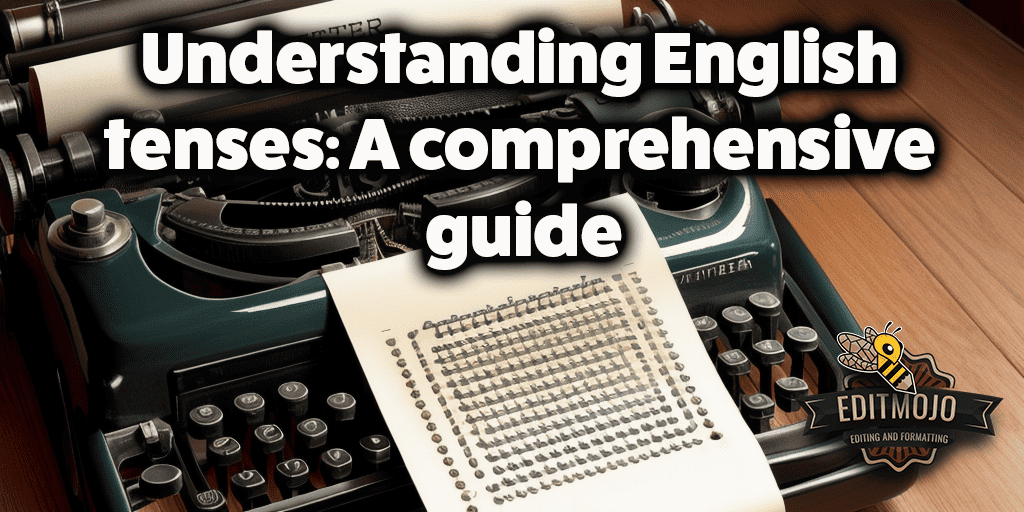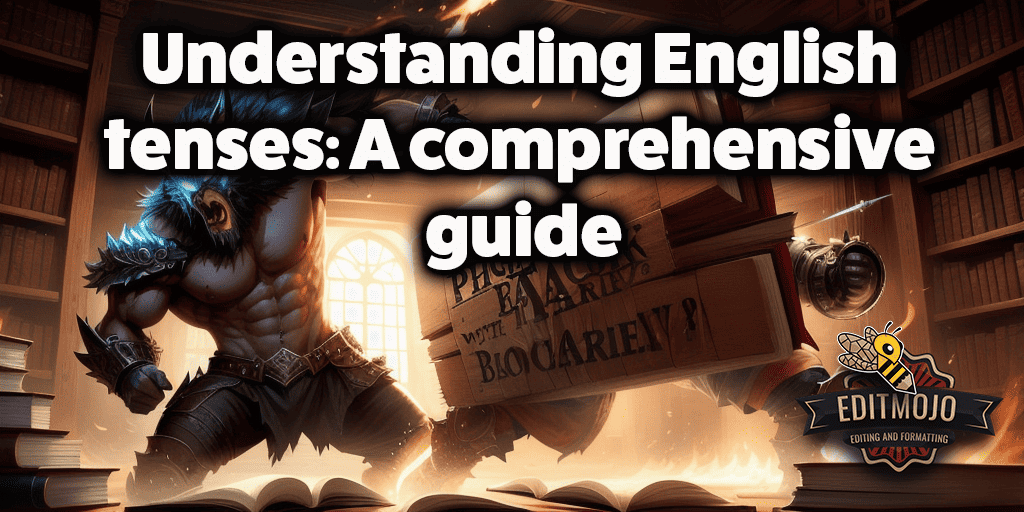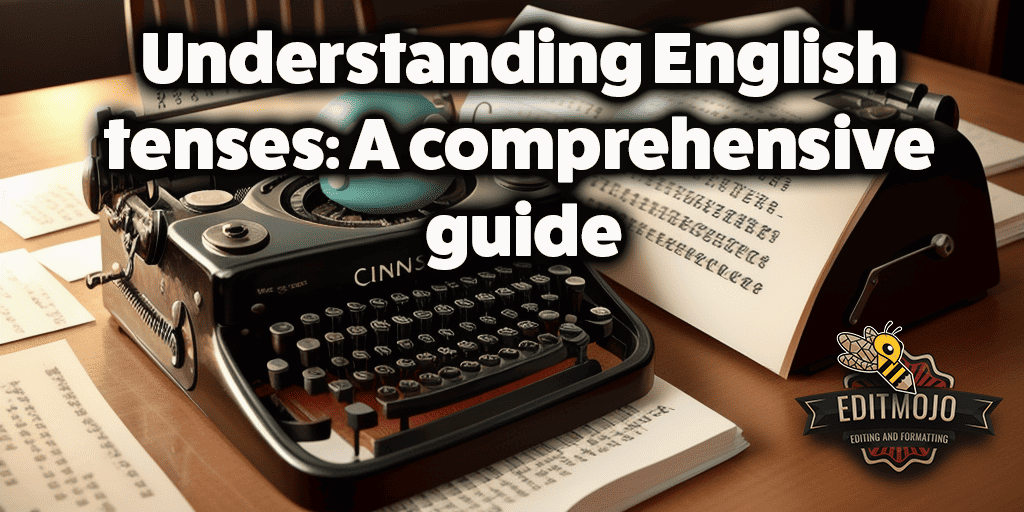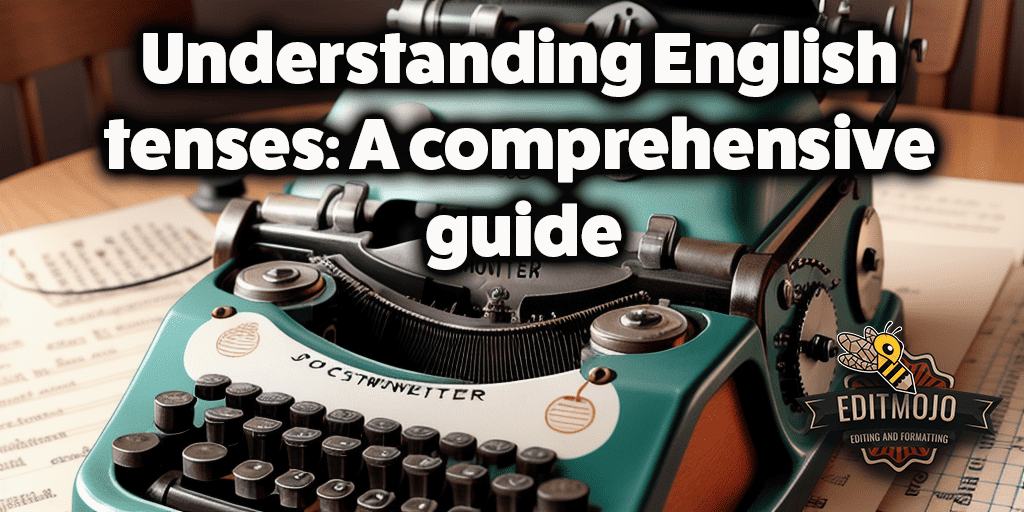Understanding English tenses: A comprehensive guide
Understanding English tenses: A comprehensive guide. Understanding English tenses is crucial for effective communication. This guide will provide a comprehensive overview of English verb tenses, from the basics to the more complex aspects.
The Basics of English Verb Tenses (grammar)
English tenses can be broadly categorized into three types: past, present, and future.
Past Tense
The past tense is used to describe actions that have already happened. For example, “I walked to the park.”
Present Tense
The present tense describes actions happening now or general truths. For example, “I walk to the park” or “The sun rises in the east.”
Future Tense
The future tense describes actions that will happen. For example, “I will walk to the park.”

Beyond the Basics: The Twelve English Tenses
English has twelve tenses, each used to express different times and states of actions. These include simple tenses, perfect tenses, progressive tenses, and perfect progressive tenses.
Simple Tenses
These include the simple past, present, and future tenses.
Perfect Tenses
Perfect tenses describe actions that are completed in relation to another time. They include the past perfect, present perfect, and future perfect tenses.
Progressive Tenses
Progressive tenses describe ongoing actions. They include the past progressive, present progressive, and future progressive tenses.
Perfect Progressive Tenses
Perfect progressive tenses describe actions that were, are, or will be continuing and are also completed at some point. They include the past perfect progressive, present perfect progressive, and future perfect progressive tenses.

Practical Examples of Each Tense
To better understand each tense, here are some practical examples:
- Simple Past: “I ate an apple.”
- Simple Present: “I eat an apple.”
- Simple Future: “I will eat an apple.”
- Past Perfect: “I had eaten an apple.”
- Present Perfect: “I have eaten an apple.”
- Future Perfect: “I will have eaten an apple.”
- Past Progressive: “I was eating an apple.”
- Present Progressive: “I am eating an apple.”
- Future Progressive: “I will be eating an apple.”
- Past Perfect Progressive: “I had been eating an apple.”
- Present Perfect Progressive: “I have been eating an apple.”
- Future Perfect Progressive: “I will have been eating an apple.”
Exercises for Practice
Practicing these tenses with exercises can help solidify your understanding. Try to create your own sentences using each tense.
Common Mistakes and How to Avoid Them
Common mistakes include using the wrong tense for the context or mixing up the structure of the tenses. To avoid these, always consider the time and state of the action you want to express and review the structures of the tenses.
Mastering the twelve verb tenses in English can significantly improve your communication skills. With practice and understanding, you’ll be able to use the right tense in any situation. Happy learning!
Remember, practice makes perfect, especially when it comes to mastering English grammar tenses.
I’m glad you’re finding the information useful. Let’s continue with some more detailed information and examples.
Deep Dive into English Tenses
Simple Tenses
Simple Past
The simple past tense is used to describe an action that has already been completed. It’s often used with a specific time in the past.
Example: “I visited the museum last week.”
Simple Present
The simple present tense is used to describe a current action, a general truth, or a habitual action.
Example: “I visit the museum every month.”
Simple Future
The simple future tense is used to describe an action that will happen in the future.
Example: “I will visit the museum next month.”

Perfect Tenses
Past Perfect
The past perfect tense is used to describe an action that was completed before another action in the past.
Example: “I had visited the museum before I met you.”
Present Perfect
The present perfect tense is used to describe an action that happened at an unspecified time before now or an action that started in the past and continues to the present.
Example: “I have visited the museum several times.”
Future Perfect
The future perfect tense is used to describe an action that will be completed before another takes place in the future.
Example: “I will have visited the museum before you arrive.”
Progressive Tenses
Past Progressive
The past progressive tense is used to describe an ongoing action that was happening at a specific moment in the past.
Example: “I was visiting the museum when you called.”
Present Progressive
The present progressive tense is used to describe an ongoing action happening right now or a future planned event.
Example: “I am visiting the museum now.”
Future Progressive
The future progressive tense is used to describe an ongoing action that will occur in the future.
Example: “I will be visiting the museum at this time tomorrow.”
Perfect Progressive Tenses
Past Perfect Progressive
The past perfect progressive tense is used to describe an ongoing action that was completed before some moment in the past.
Example: “I had been visiting the museum for two hours when you arrived.”
Present Perfect Progressive
The present perfect progressive tense is used to describe an action that began in the past, continues in the present, and may continue into the future.
Example: “I have been visiting the museum since morning.”
Future Perfect Progressive (writing resources)
The future perfect progressive tense is used to describe an ongoing action that will be completed at some specified time in the future.
Example: “I will have been visiting the museum for two hours by the time you arrive.”
Remember, understanding and practicing these tenses will greatly improve your English communication skills. Keep practicing and don’t hesitate to seek help if you’re finding any particular tense challenging.
- Q: How many tenses are there in English? A: There are twelve tenses in English, divided into four categories: simple tenses, perfect tenses, progressive tenses, and perfect progressive tenses.
- Q: What are the simple tenses in English? A: The simple tenses in English are the simple past, simple present, and simple future. They describe actions that happened in the past, are happening in the present, or will happen in the future.
- Q: What are the perfect tenses in English? A: The perfect tenses in English are the past perfect, present perfect, and future perfect. They describe actions that are completed in relation to another time.
- Q: What are the progressive tenses in English? A: The progressive tenses in English are the past progressive, present progressive, and future progressive. They describe ongoing actions.
- Q: What are the perfect progressive tenses in English? A: The perfect progressive tenses in English are the past perfect progressive, present perfect progressive, and future perfect progressive. They describe actions that were, are, or will be continuing and are also completed at some point.
